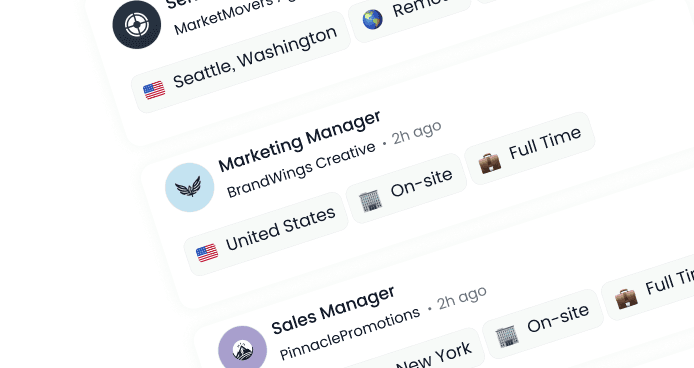Company Research Made Easy: 8 Proven Steps Before You Apply
Published:
August 26, 2025
All
Job Seeker Tips
AI Recruitment
Career Development
Don’t just apply — investigate.
Introduction
Ever hit “Apply” and then wondered if the company truly aligned with your values—or even paid fairly? To tell you the truth, it happens to many job seekers and it’s quite natural to ask the questions above. Not to mention, flexibility and salary clarity give candidates leverage. However, you can only get that edge if you know how to probe beyond the job post.
If you’re reading this, you’re at the right place as we will discuss eight steps that will show you the smart way to research a company before you apply, saving hours, sharpening applications and boosting interview confidence. So, let’s begin.
Companies mention who they are, their origin stories, their values and other valuable information. They also expect potential candidates to read them before coming for an interview, and that can give you the edge, so you should:
Scan the About page and latest news releases. Note mission, flagship products, market segments and recent milestones such as acquisitions or leadership changes.
Read the Careers page voice. Are they playful, formal, or employee-centric? Tone reveals internal culture cues.
Capture at least three “brand phrases.” Example: “We empower small businesses.” Mirror one phrase in your cover letter to show fit without parroting.
These basics anchor your narrative and feed straight into your interview prep research.
When it comes to science, they say numbers don’t lie, and they also provide great insights; the same goes for businesses and companies. For example, if you:
Verify headcount and funding via LinkedIn, Crunchbase or state registries. Sudden growth spikes may hint at new projects or resource strain.
Compare revenue figures from press releases with industry databases. The more info you have, the better the impression you can make.
Log product launch dates in a spreadsheet so you can reference success stories (“Your 2023 AI module impressed me because…”).
Besides the valuable information that can help you land a successful interview, consistency between public filings and the careers site is a green flag; big gaps signal risk.
Finding the company culture can be a bit tricky, but not impossible. Here are some ways you can get the real picture of the work environment:
Filter reviews by role and location on Glassdoor, Fishbowl or Blind. A 3.9 overall might hide a 2.8 for sales in Europe.
Sort by “pros” and “cons.” Tally recurring words: “autonomy,” “overtime,” “supportive managers.” A repeated “overtime” warning could matter more to you than a free-lunch perk.
Watch employee-posted videos on TikTok, YouTube or LinkedIn. How do teams collaborate? Are leaders visible? Real voices beat glossy stock photos.
Gauge Pay, Perks and Policies
This point is a no-brainer; after all, the pay and perks are a major factor when it comes to deciding on finalizing a job. The policies are equally important.
So, to figure out the above, you can search for:
Salary ranges. Check statewide job boards or the company’s own listings where disclosure is the law.
Total rewards. Hunt benefits pages for health coverage details, learning stipends and equity options. A fast-growing start-up might trade lower pay for stock.
Remote and hybrid norms. Does the firm mandate “anchor days,” or can you work fully off-site? Cross-check employee comments with policy PDFs to confirm.
These company research tips for job seekers ensure you benchmark offers before negotiations begin.
How long managers and upper executives have been with a company can provide insight into it's stability and long-term strategy.
So, make sure to check:
LinkedIn tenure filter. Long-standing executives often signal steady strategy, while rapid C-suite turnover may foreshadow restructuring.
Read earnings-call transcripts (public companies) or investor Q&A (start-ups). Note phrases like “break-even horizon” or “near-term profitability.”
Check board composition. A diverse board can indicate inclusive decision-making and robust governance.
Besides looking at the people within the company and what the business says about itself, get third-party information and verification.
You can do that by:
Industry analysts and newsletters. Subscribe to two sector-specific digests that mention the target company. Analysts often spot risks employees miss.
Podcasts and webinars. Executives tend to speak candidly in audio formats. Clip a compelling quote to reference in your interview.
Competitor comparisons. Use G2 or Capterra to view product ratings side-by-side; ask informed questions about differentiation.
External sentiment provides context you won’t find on a careers blog and supplies smart talking points.
The right tools can be extremely useful in information gathering, and the most important resource is people. The information that a person can provide is practically the proverbial “straight from the horse’s mouth”
AI assistants. Free browser extensions like Teal, Huntr or Final Round AI automatically build company snapshots, track applications and suggest tailored interview questions.
Internal referrals. Tap alumni directories or professional Slack groups. One 15-minute chat can confirm glass-door rumors or highlight hidden perks.
LinkedIn Events. Many firms host virtual “Ask Me Anything” sessions. Attend anonymously, then follow up privately for deeper insights.
Combining data and human input upgrades researching company values from guesswork to evidence.
Create a one-page “fit sheet” by writing a few tight sentences under three clear headings—Facts, Evidence, and Why it matters to me. In fact, note hard data such as headcount growth, recent funding, or key product launches. Under Evidence, summarize proof points: Glassdoor comments praising supportive managers, an earnings call that doubles the R&D budget, or a press release on sustainability awards. In Why it matters to me, explain the personal relevance—rapid hiring could boost your promotion prospects, while a mentoring culture matches your learning style.
Use this sheet to:
Tailor your resume. Mirror the company’s phrasing (“customer-obsessed”) in bullet points.
Craft cover-letter hooks. Reference specific achievements (“Your 2024 sustainability award aligns with my volunteer work”).
Practice STAR (Situation, Task, Action, Result) stories. Align examples with the pain points you uncovered (e.g., rapid scale).
Bonus: Red flags you shouldn’t ignore
While researching, watch for these warning lights:
Opaque or absent DEI data. Even small start-ups should share goals or initiatives.
Legal disputes in the past 24 months. Frequent lawsuits may reveal cultural or compliance issues.
Negative funding news. Down-rounds or investor exits can lead to hiring freezes.
If you spot two or more of these, pause before applying.
Putting it all together
Efficient research isn’t stalking; it’s strategy. By layering official data, outsider views and insider conversations, you convert what to look for in a company before applying it into confident action. You’ll submit stronger applications, deliver sharper interview answers and negotiate from a position of knowledge, not guesswork.
Ready to apply these eight moves?
View job opportunities on DigitalHire and let its matching engine pair you with roles that fit your research criteria.
Find Your Dream Job
Put your best foot forward in your job search. Stand out from the crowd, and get hired fast!




